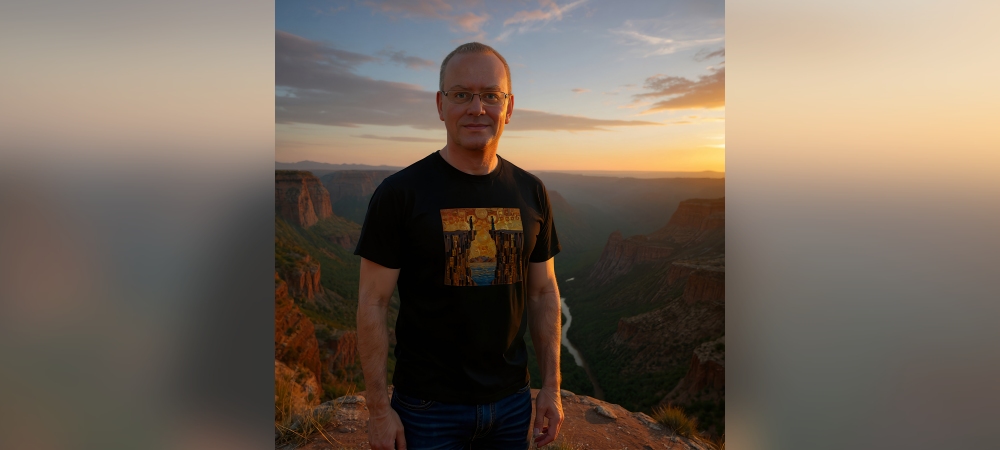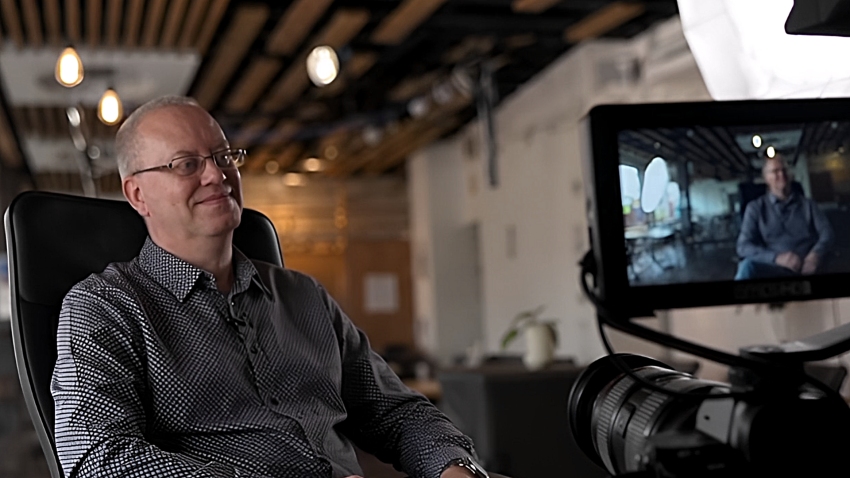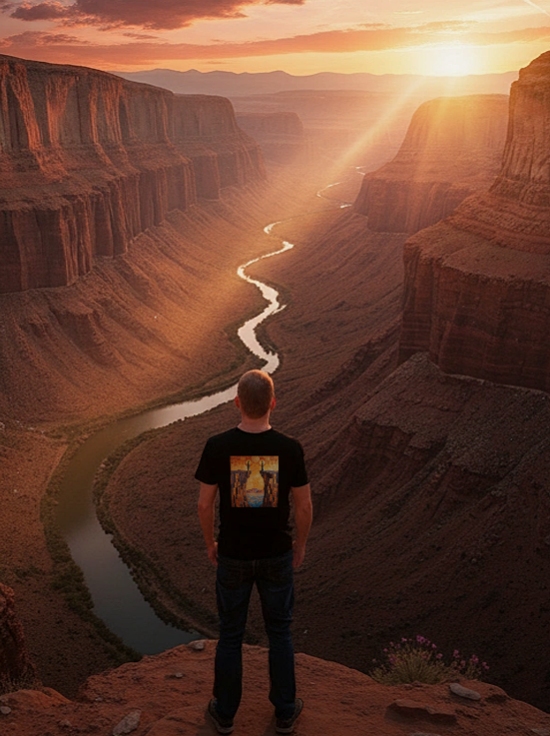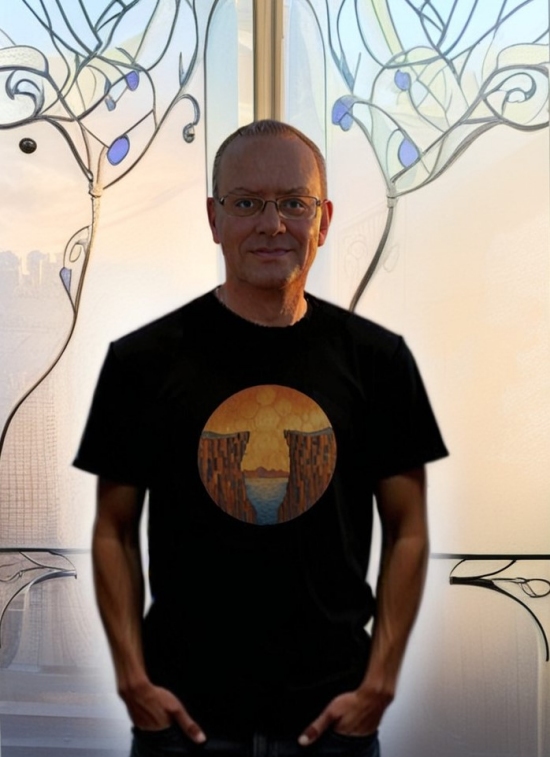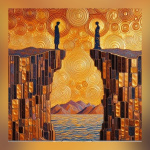Following TPA’s review of The Great Divide, multi-instrumentalist and composer John Holden kindly agreed to talk with Jane Lee where he elaborates on the artistic vision that has shaped his music.
Jane Lee [JL]: Hi John. Thanks for agreeing to tell me a little about The Great Divide, and about your music in general. You released your first album in 2018. Was this the fulfilment of a childhood dream? When did you first begin performing and composing music?
John Holden [JH]: I attempted to write some songs in my early 20’s when I was in ‘hobby’ bands with some friends. On reflection they were probably terrible. But it was still fun going into a studio for the first time. I started work on the debut album in 2016. It was really a way of concentrating my energies – to stop ‘noodling about’ and have an end goal. No one was more amazed than me how I managed to convince all those amazing musicians to come on board. I thought I might sell a few CDs to friends. But everything went somewhat bigger than I anticipated and I ended up with an unexpected musical career!
JL: When you start work on a track does the initial inspiration come from the subject matter or do you begin with the music?
JH: A combination of both. I always have plenty of ideas floating about and if I think I have a good one, that will be a starting point. I will sometimes have a title or some basic lyric to begin with but more often I will start writing and see if any of the ideas seem a good fit. I have learned not to worry about trying too hard. I just let my imagination run free and don’t edit myself until I need to tie things down.
JL: You have always drawn from an impressive roll call of guest vocalists. When you write a song do you have the sound of a specific singer in mind?
JH: I usually look at the lyric and the idea of the song. For some tunes it is obvious who I could ask to sing. I like having a mixture of female and male voices to give a balance and a different perspective. It might give the song a different flavour to have a certain voice. But once I have someone in mind, that’s who it ends up with.
JL: Your decision to employ AI vocals on the opening track is a contentious one that some might view as the beginning of a slippery slope – particularly when you had three top class vocalists at your disposal. How would you defend your choice?
JH: Well to begin with I don’t feel I have to defend anything to do with my music. I create and I publish. There is no obligation on anyone to buy it or like it. As long as I’m happy with it that’s enough for me. I feel some people get quite irrational about AI. No one has ever said that I should not use MIDI or drum samples or symphonic libraries or choirs. It is OK to use the ‘voice’ of a violin or the ‘feel’ of a choir, but because I dare to use an AI manipulation of my own voice that’s too much!
I started using AI to help create guide vocals that I would then replace with ‘real’ singers. The process I used was quite complex and took a long time to develop. I got such good results that finding people who could do a better job than my demo was getting quite tricky. For that one track the singer I had in mind was unable to do it at the last moment, so I decided to use the demo. I have not hidden the fact. And I would encourage people to listen before they pass judgement. You cannot stop technology – for me it is just another creative tool. I remember everyone being amazed at Jurassic Park. Do we think it would have been a better film without the CGI dinosaurs?
JL: How much freedom do you give to your guest vocalists and instrumentalists in creating their own parts?
JH: I like to give the instrumentalists as much freedom as I can. I am happy for them to experiment within a general brief. I encourage them to do multiple takes as from a producer’s point of view it is good to have options. For the vocalists, the people I work with regularly know the kind of thing I like. I will talk them through the song and discuss where it needs to go. Although for the recent album I supplied a fairly detailed guide vocal – which helped enormously.
JL: Looking through your output it seems you take on more personal responsibility with each new album. For Proximity and Chance you elected to programme your own drums, and on this latest album you also take full responsibility for keyboards as well as the vast majority of the guitar and bass playing. Are you someone who always needs a new challenge, or do you want a firmer hand on the reins?
JH: It seems with successive albums I am using less and less guests. In some cases this is because people are just too busy with their own careers. On the current album I had a choice of waiting six months for some people to become available or seeing if I could do it myself. The finished songs are maybe less virtuosic than if played by other musicians, but it gives the album a different atmosphere if it’s just me playing. It’s also considerably cheaper! Having said all that, when you get a part sent to you it does feel like opening a Christmas present!
JL: This is probably like asking the length of a piece of string, but how long on average do you take to create an album?
JH: I would estimate 2000 hours for the music and 500 hours for the artwork and videos.
JL: One aspect of your writing that I particularly love is the vibrancy of your symphonic palette. You obviously select and create your instrumental colours with meticulous care. Do you start with a specific timbre in your head and then experiment with ways to achieve it? What effect were you striving for in this album?
JH: I have huge libraries of sounds, styles and playing techniques to choose from. I might create MIDI melody and harmony parts and trial it on violin and cello. I will also see how it sounds on French horn and trombone! No instrument is off limits, but in the end, it has to sound correct for the track. I also like to double up voices to create a stereophonic effect – for example by combining two acoustic guitar sounds but spaced an octave apart, and with slightly different tunings.
For The Great Divide I decided to pull back on the orchestra a bit. Instead I tried for the effect of a band keyboard player replicating orchestral sounds. It seemed appropriate for the material this time around. Also if you push back the orchestral sounds a little it opens up the space for guitar and bass.
JL: I get the impression you really enjoy the challenge of writing in different styles – or of adapting your personal style to fit the subject matter. How would you describe your stylistic comfort zone?
JH: I try not to have a comfort zone but I’m sure I do. I guess it’s inevitable that my choices of instruments and preferred chordal voicings come into play. I think that I like an interesting concept embodied within a strong melodic song, and because of my Prog leanings that allows some space for the music to help tell the story.
JL: What gave you the idea for the album’s title?
JH: When I wrote Leaf to Blade it had a working title of Great Divide because of this line:
‘Make it Great’ while lands divide
At this point I thought I had finished the album. However after giving it some thought I realised I needed to write a song that would encapsulate the inspiration behind all the songs and give the album more cohesion. This became the title track, which depicts a relationship teetering on the edge. Each step draws the two figures, Gina and Dan (characters from previous songs, Highline and Against the Tide), closer to that chasm. They have to face the fact that they’re being slowly erased from the pages of their own story. When writing it, I imagined how these characters would feel about this inevitable final appearance. It made me think of fatalism and pre-determined events: the idea of ‘stealing the pen’ to re-write our own story rather than let fate dictate the outcome.
JL: I feel as though Storm Warning and Sandcastles describe the beginning and end of the same doomed relationship. Was that your intention?
JH: Well spotted! I always saw them as the bookends to a relationship moving from lust to disappointment. Another hint towards the ‘divide’.
JL: And how does Art and Craft fit into this theme?
JH: The Arts and Crafts Movement (that inspired the album artwork) was an idealistic response to the alienation caused by industrialization. The intention was to bring beauty and dignity to all. Ironically the movement’s output became a luxury, serving to distinguish and enrich the lives of the middle and upper classes who could afford them, highlighting the very class divisions it sought to overcome. To quote the album’s opening lyrics, they were ‘so close’ to achieving their goals but ultimately ‘so far’ away.
JL: And finally, if you had to select just one track from your output to be remembered by, which one would it be?
JH: Which is your favourite child? A personal favourite is Heretic from Rise and Fall. I think my writing is getting better but I would also go right back to the beginning and say that Capture Light was a strong starting point.
JL: Thanks so much for all the insights. I wish the new album all the success it deserves.
LINKS
John Holden – Website | Facebook | Bandcamp | YouTube | X

